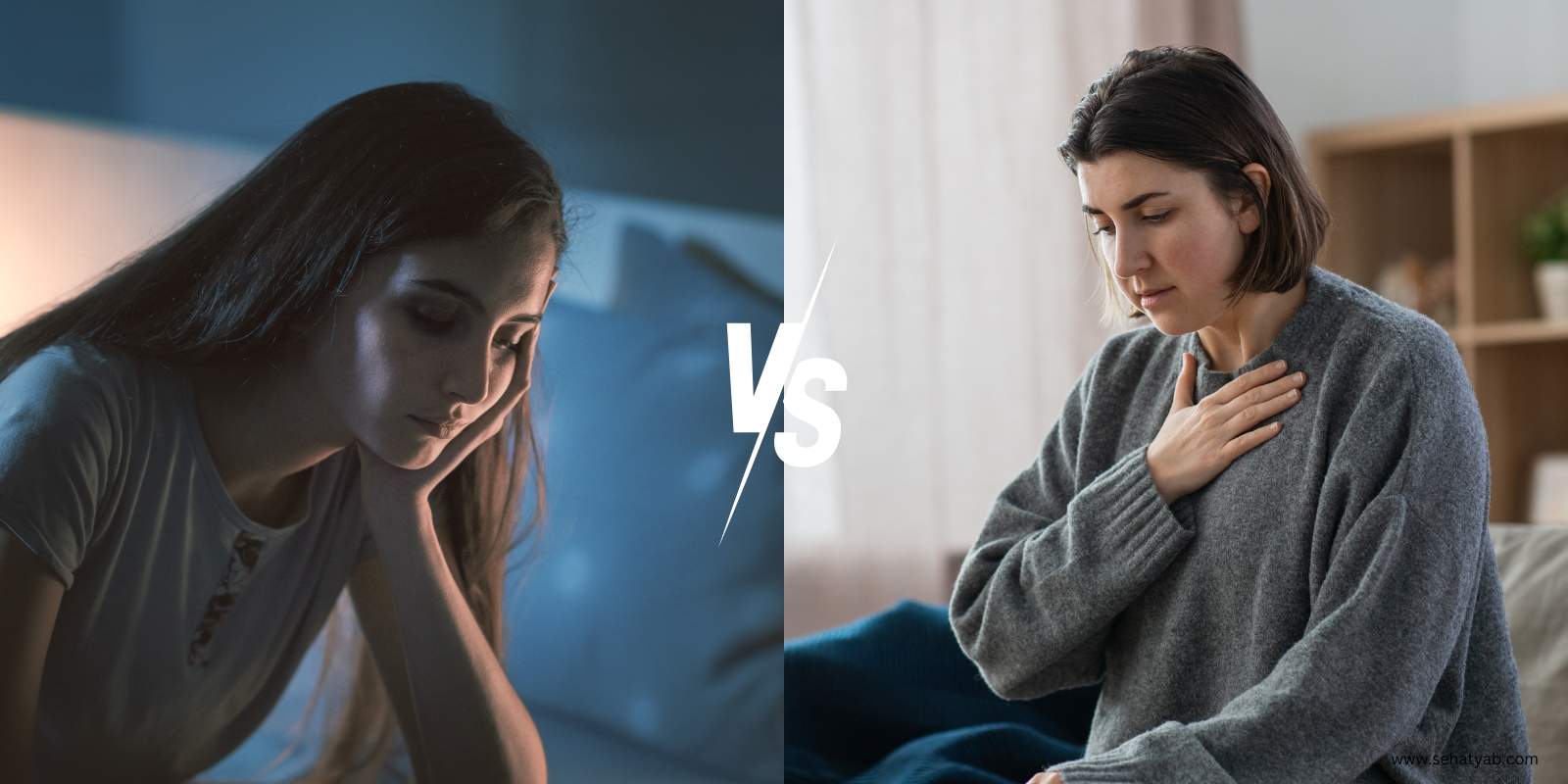Have you ever had a panic attack and are you sure it was a panic attack?
The difference between an “anxiety attack” and a “panic attack” is very important to understand the complexities of mental health. Although these terms are very commonly used, they are often used interchangeably.
This comprehensive guide delves deep into the essence of anxiety attacks and panic attacks, stating their definitions, symptoms, causes, and treatment.
What is an Anxiety Attack?
There is no such term as Anxiety Attack in the “Diagnostic and Statistical Manual of Mental Disorders, 5th edition” (DSM-5), however, anxiety is a feature of several common psychiatric disorders. It affects a person when it’s long-standing, excessive, and disruptive to daily life and in this case, it’s termed an anxiety disorder.
What is a Panic Attack?
A panic attack causes sudden, temporary feelings of fear and strong physical reactions in response to ordinary, non threatening situations. When you’re having a panic attack, you may sweat a lot, have difficulty breathing, and feel like your heart’s racing. It may feel like you’re having a heart attack.
The Difference between anxiety attack & panic attack
| Anxiety | Panic Attack |
| Starts slowly with intense worrying or feeling uneasy | Hits suddenly like a wave of fear or terror |
| Sometimes triggered by certain stressful situations | Can happen out of the blue, no clear reason |
| Symptoms might include too much worrying, feeling restless | Symptoms may include fast heartbeats, chest pain, or feeling like you can’t breathe |
| Can last longer, like for minutes or even hours | Peaks quickly, usually over in a few minutes |
| You can try calming techniques to deal with it | Needs immediate help to feel better |
Anxiety and a Panic Attack with Example:
Imagine Sarah, a college student preparing for her final exams. As the deadlines approach, she becomes worried and uneasy, unable to shake off the feeling of impending doom. Despite the preparation, Sarah’s mind only thinks: “What if I fail? What if I disappoint my parents? What if I never achieve my dreams?” As she sits at her desk, her heart races, her hands tremble, and her thoughts get out of control. Each passing moment feels like an eternity as she struggles to concentrate on her studies. Despite her rational mind reassuring her that everything will be okay, the overwhelming weight of anxiety refuses to relent, leaving Sarah feeling exhausted, defeated, and utterly overwhelmed.
Now, let’s look at Ali, a young man sitting on a busy railway station during rush hour. Suddenly, he experiences a surge of terror, his heart pounding, his palms sweating, and his breaths becoming shallow.
Sarah’s story is an extreme case of anxiety where we know the reason; however, Ali gets a panic attack out of nowhere at a busy railway station. This is precisely the difference between an anxiety attack and a panic attack.
Symptoms of anxiety and panic attacks
While anxiety and panic attacks share common symptoms, they differ in intensity and duration. Symptoms of anxiety may include:
- Excessive worry
- Restlessness
- Muscle tension
- Difficulty concentrating
- Fatigue
- Insomnia
- Gastrointestinal issues
On the other hand, symptoms of panic attacks may include:
- Intense fear or terror
- Rapid heartbeat (palpitations)
- Chest pain or discomfort
- Shortness of breath
- Sweating
- Trembling or shaking
- Feeling of choking
- Dizziness
- Nausea Feelings of unreality
Causes of anxiety and panic attacks
Anxiety can be triggered by various factors, including:
- Genes: Individuals with a family history of anxiety disorders may be at a higher risk.
- Environmental factors: Stressful life events such as trauma or significant life changes.
- Neurochemical imbalances: Imbalances in neurotransmitters like serotonin, dopamine, and norepinephrine.
- Personality factors: Certain traits such as perfectionism or neuroticism.
- Medical conditions: Chronic illnesses like cardiovascular or respiratory disorders.
On the other hand, panic attacks are caused by:
- Trauma or stress: Previous traumatic experiences, accidents, or sudden loss.
- Neurological factors: Abnormalities in brain structure or function.
- Substance abuse: Use of stimulants, hallucinogens, or certain medications.
- Hypersensitivity to bodily sensations: Overreacting to physical sensations like increased heart rate.
Treatment of anxiety and panic attacks
Managing anxiety attacks often involve:
- Cognitive-behavioral therapy (CBT): Helps identify and challenge negative thought patterns.
- Exposure therapy: Gradual exposure to anxiety-provoking situations.
- Medications: Antidepressants or benzodiazepines to alleviate symptoms.
- Stress management techniques: Relaxation exercises like deep breathing and meditation.
- Lifestyle modifications: Regular exercise, balanced nutrition, and adequate sleep.
Treating panic attacks may include:
- Cognitive-behavioral therapy (CBT): Helps confront and overcome fears associated with panic attacks.
- Medications: Antidepressants like SSRIs or benzodiazepines for immediate relief.
- Panic control treatment: Teaches specific techniques to manage and prevent panic attacks.
- Lifestyle modifications: Healthy habits, stress reduction techniques, and avoiding triggers.
- Support groups: Participating in therapy groups with others who have experienced panic attacks.
SehatYab is Pakistan’s leading digital mental health service where you can consult online with best psychologists and psychiatrists in Pakistan for anxiety, panic attacks and other disorders. Visit www.sehatyab.com or contact at +923001003140 (WhatsApp) or +923001003171 (Call) to book an appointment.
Conclusion
In conclusion, anxiety and panic attacks are distinct experiences with different symptoms, triggers, and treatment methods. While anxiety attacks stem from worries, panic attacks involve sudden and overwhelming fear accompanied by physical symptoms. Effective treatment for both conditions is a combination of therapy, medication, and lifestyle changes. By understanding the differences and seeking appropriate support and treatment, individuals can effectively manage their symptoms and improve their overall quality of life.



